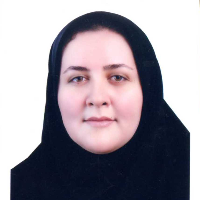Investigating the Ecological Conditions of Muddy Substrates Using Macrobenthos Communities in Sajafi Area, the Persian Gulf
Author(s):
Article Type:
Research/Original Article (دارای رتبه معتبر)
Abstract:
Background and Objective
The majority of the Earth's surface is covered by water bodies whose beds provide very diverse habitats for aquatic. Since benthos communities choose particular type of bed as their habitat, study of sediments and organisms in the substrate environment can help the environmental assessments. This study was performed to assess the ecological condition of the muddy substrates using macrobenthos communities in Sajafi region of the Persian Gulf. Method
Sampling was done in fall 2009 at 20 stations with 3 replicates at each station to determine organic matter and grain size of the sediments. Measurement of water chemical and physical factors and identification of macrobenthoses were carried out using Hach-HQ40d and Grab devices. Diversity indices of Shannon - Wiener, Simpson, Camargo uniformity, Margalef and Menhink species richness were calculated. Nonparametric Kolmogorov-Smirnov test was used to evaluate the distribution of the data, the oneway ANOVA and Spearman correlation tests were used to compare and evaluate the relationships among diversity and density indices, chemical and physical factors and sediment parameters, and Welch pattern was used for assessing the environmental pollution. Findings
Totally 8 groups of Benthos comprising 81 species were identified. The most frequency percent belonged to Gastropoda with 43.03%, Polychaeta with 29.31 % and Bivalvia with 20.53%, respectively. The highest value of Shannon index at station 11 was 4.523. The highest values of diversity and dominance of Simpson, Camargo evenness, and Margalef and Menhink richness indices were 0.948, 0.158, 0.828, 5.830 and 2.830 respectively. The maximum and minimum values of frequency were 4920 and 560 macrobenthos per square meter, at Stations 10 and 17 respectively. Discussion and Conclusion
According to the results of the measured indices, which confirmed the high diversity of macrobenthos in the muddy bed of Sajafi area, it can be concluded that the study area has a high potential to preserve the environmental richness of benthic invertebrates.Keywords:
Language:
Persian
Published:
Journal of Environmental Sciences and Technology, Volume:21 Issue: 3, 2019
Pages:
112 to 125
https://www.magiran.com/p2007677
سامانه نویسندگان
مقالات دیگری از این نویسنده (گان)
-
Develop of the management strategies using the new vulnerability assessment method and DPSIR model in wetland ecosystems (Case study: Lahijan Amirkalaye wetland
Sheyda Rostamifar, Seyedeh *
Journal of Natural Environment, -
Analysis of Factors Affecting the Vulnerability of Arsbaran Protected Area and Development of Management Strategies Using the DPSIR Model
Bita Baheri, *, Sahar Mokhtari
Journal of Geography and Environmental Hazards,


